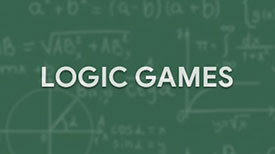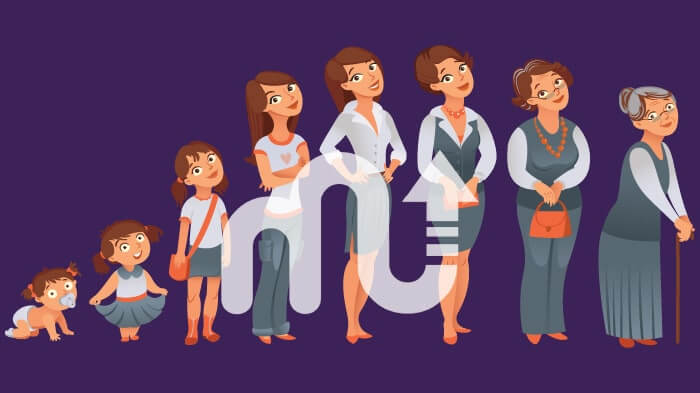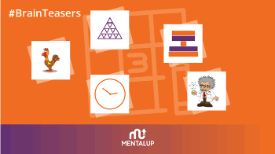10 Best Brain Training Games - Boost Your Brain
Do brain training games work? It has been proved by many pediatricians that brain training games have a great impact on children’s mental growth. Along with their many benefits, brain training apps that offer brain boosting games are also enjoyable for your kids. We have listed the best games to improve brain functions that you and your children can explore.
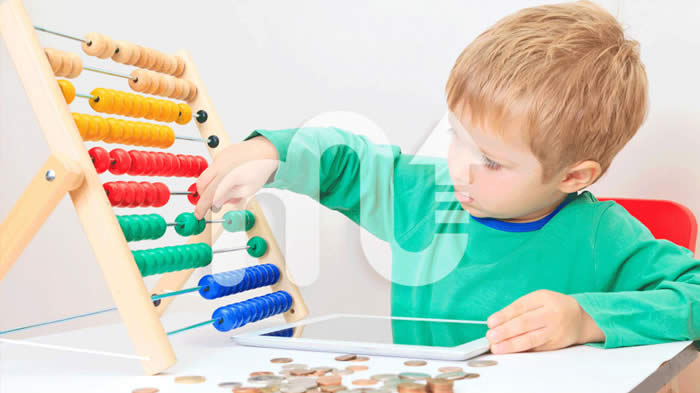
Boost Your Brainpower With Games
It is easy to include brain enhancing games in your children’s play routine. Why wouldn’t they be included, they are nothing but fun! Introducing your young ones to mind development games will help them develop social skills, and enhance their concentration and focus. At the same time, they will be having the time of their life.
1- Computer-Based Brain Booster Games
Mental agility is very important for children. Fortunately, there are plenty of online games to train their brain.
MentalUP Brain Games, certified pedagogical products that are recommended by child development specialists, provide the best brain booster games tailored to your children’s needs.
How to Play MentalUP games?
MentalUP offers brain teaser puzzles with a wide range of topics such as verbal, visual, and logical intelligence development, attention, memory, and analytical training skills.

It is one of the best apps for 7 year olds and Educational Toys for 6-7 Year Olds (younger and older kids can also play these games) that children can spend their time most efficiently when using computers, mobile phones, or tablets.
Sounds interesting? Try MentalUP’s brain-boosting strategy games for kids right below:
Specialized Training:
MentalUP focuses on the skills that have to be enhanced. The game ends when the tower falls completely or if a block falls from the tower (other than the block a player moves on a turn). The person responsible for the collapse loses the game.
2- Jigsaw Puzzle Game/Toy
Are you looking for a fun and beneficial activity? Jigsaw puzzles are one of the best games to improve brain function out there. It is one of the educational toys for 8-9 year olds and olders (for youngers, parental control is suggested) categorized as a brainpower improving game.
How to Play Jigsaw Puzzle?
Jigsaw puzzles involve detecting the parts that cause the wrong construction and joining the correct pieces together with increased observation. It is considered among the best mind-enhancing games; therefore, it requires analytical thinking, critical thinking, and focus skills.
It might seem like a tough task at first, but, in time, with the tips we provide, you’ll have a lot of fun.
Step 1- Turn All the Pieces Picture-Side-Up
Turning the pieces picture-side-up will provide a better understanding of the bigger picture.
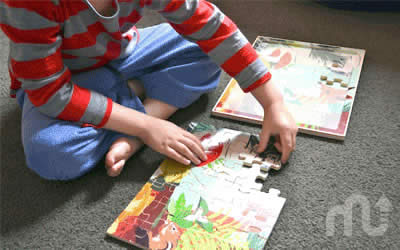
Step 2 - Pile Up
Pile up the pieces that form a specific part of the picture. Start with the edge; the part of the edges will have one flat side without any holes or knobs on it. Then, start piling the other pieces that form an image.
For example, if the puzzle is an image of a kitten with a yarn, you can define the differences between the pieces that belong to the yarn and the pieces that belong to the kitten. Colors are very important at this point.
Step 3- Define the Border of the Puzzle
Start by putting together the edge pieces that you’ve collected. Defining the border of the puzzle will help you outline the image and work yourself outside in.
Step 4- Put Together the Other Figures of the Puzzle
After the edge, now you can form the other images that form the puzzle. Along with the colors, you should pay attention to the lines and prints that are on the pieces.
Tips
Look Out for the Shape of the Pieces: The border pieces are easy to define, they have one flat side to it, but the inner pieces can vary up to six different shapes. The basic shapes are 4 holes and 4 knobs and they vary between each other. The shape variation can differ according to the difficulty level.
Make Some Space: Because puzzles are based on defining the picture, it is important to have plenty of space and some good lighting. You can play the more difficult or bigger jigsaw puzzles all together as a family so find a big, flat surface and enjoy your time.
Looking for a convenient way to boost your children’s brain skills? MentalUP has 150+ educational and entertaining games that will help your children improve their numerical, visual and verbal intelligence while boosting their mental, cognitive and social skills.
But that’s not it! From building motor skills to enriching learning abilities, MentalUP provides games specific to your children’s needs.
3- Guess Who Game:
If your kids like mystery, this game is for them! 'Guess Who' is a memory booster and memory matching game that requires your kids' full attention to solve the mystery.
How to Play the Guess Who Game?
Although there are multiple boards in this game, it is a game for two and is perfect for ages 6+. It is a fun and easy-to-play mind enhancing game so here are the guidelines on how to play it.
Step 1- Place Your Board:
Each player should sit across each other and place a board in front of them. There are 24 characters for each of the boards. If it’s your first time playing, you would have to place the cards into the slots. If not, flip up the cards with the front facing you and the back facing your opponent.
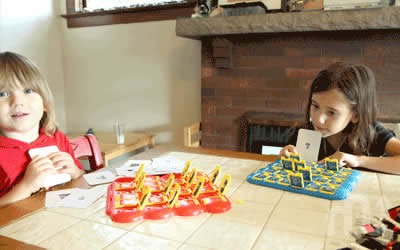
Step 2- Shuffle-Shuffle:
After you’ve set up the game, shuffle the cards that have a character on them and pick one each. Make sure that your opponent doesn’t see who your character is. If they do, shuffle the card back in and pick a new one. Place the character card you’ve picked at the front of your board.
Step 3- Start Guessing:
Decide on who will go first. Each of the opponents will take turns to ask their questions. You can only ask questions that can be answered with a “yes” or “no”. For example, you can ask if the character has blue eyes or brown hair. Asking if they have glasses or hats, etc. can be helpful.
Step 4- Eliminate:
After your opponent answers your question, eliminate the characters that don’t apply to the answer. If they answer ‘yes’ when you ask if they have green eyes, flip the ones on your board that doesn’t have green eyes.
Step 5- Take Turns:
After you’ve ruled out your characters, allow the time for your opponent to ask you a question and rule out their own characters.
Step 6- Win or Lose:
As you keep guessing and ruling out characters, you’ll start narrowing it down. A character guess ends the game. If you have one character left, ask “Is it Mary?”. If you are correct, you win! If you’re the winner, move the peg for easy scorekeeping. However, if you make the wrong guess, you lose.
Keep in mind not to make a character guess if you're not strongly sure about it. However, if your opponent has only one card left, it may be a good idea to make a wild guess before it’s their turn.
4- Jenga Game:
This game not only develops mental skills but also helps with enhancing motor skills. If you’re seeking brain stimulating games requiring strategic thinking, Jenga will suit you well.
How to Play Jenga?
Are you ready to be steady? Among brain boosters for kids, Jenga is one of the best. It is played by a minimum of two players. It consists of 54 wooden blocks.
Step 1- Build the Blocks:
To start the game, the blocks should be built to form a tower. The person who stacked the tower goes first.
Step 2- Start Playing:
At this point, there are two steps to the game. Take out one of the blocks in the tower (the piece can’t be from an incomplete part of the tower), and place it on the topmost level in order to complete it. You can only use one hand at a time. Every player takes turns until the game ends.
Step 3- The Collapse:
The game ends when the tower falls completely or if a block falls from the tower (other than the block a player moves on a turn). The person responsible for the collapse loses the game.
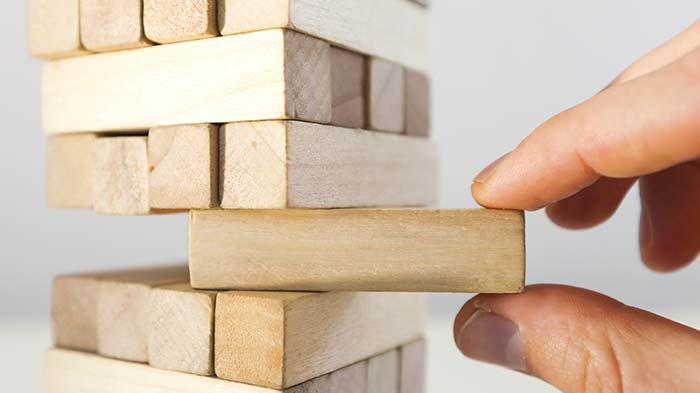
5- Battleship Game:
This game requires strategic thinking, prediction skills, and numerical intelligence, so it’s quite an intelligence booster. It is also one of the most popular fun games among math games, and your children will enjoy it very much!
How to Play Battleship?
Battleship is another game that requires two players. Similar to chess, it is a game that consists of 10x10 squares and aims at sinking the rival’s ship.
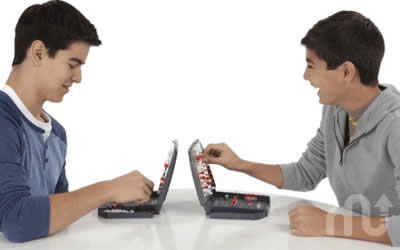
Step 1- Plot:
Place all your ships on the grid according to their size, making sure that there isn’t any overlap. For example, a battleship is four blocks, but an aircraft carrier is five blocks.
Step 2- Fire in the Hole:
By taking turns, take shots at your opponent’s plots. Call out where you have organized an attack, for example, “A-5”. Mark your shot as a hit (X) or a miss (O) on your enemy ship grid according to your opponent’s reply. When it’s your enemy’s turn, answer hit or miss, according to their shot. Mark your hit ships with an X. When a ship is sunk, you must inform your opponent which ship it is, for example, "My aircraft carrier is sunk!".
The first person to sink all of the enemy ships wins the game.
6- Solo Test:
The solo test game is among the most favored brain training games because it always requires calculating a few steps forward. It is another strategy game similar to chess and enhances analytical thinking along with focus skills.
How to Play the Solo Test?
It is played with 32 pawns arranged on a stand. The game starts with an empty hole in the center. A pawn can move both forward and backward, and left and right by jumping over another pawn into an empty hole. The pawn that is skipped over is captured and removed from the stand.
The game has to be continued until there is only one pawn left. However, it is not easy to leave only one pawn behind. Therefore, players mostly finish the game with more than one pawn on the board.
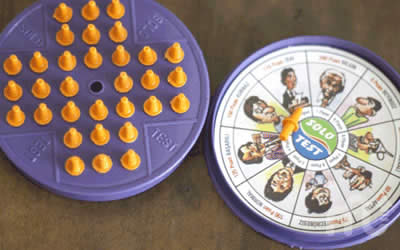
7- Games to Play With Parents
In every adult, there is still a child. Almost every game that is played by at least two players can be played by/with adults. Games to improve brain function are not only designed for children, but parents can benefit from brain training games as well. Besides, you can always come up with your own game. That will not only be unique, but it will also strengthen your bond as a family.
Name Game
As mentioned before, all of the brain boost games on this list can be played with parents. In addition to them, you can come up with your own brain stimulating games. For instance, you can ask your child to pronounce names reversibly (Marc-Cram). It is recommended to start with the easy names, Lisa, Mat, etc., and proceed gradually. You can always adapt the game and play it with animal names, plant names, and more.

Word Follow-Up
Another option you can play is a word follow-up in which you say a word that begins with the last letter of the previously said one (Cat-Tail-Lavender-Rinse). As one of the impressive brain words games, this game can also be listed among other working memory booster games and brain power increasing games.
For more games that can be played as a family and at home, check out our Fun Games to Play at Home article.
8-Question-Answer/Riddle:
Riddles have been used as both amusement and brain training games for hundreds of years. You can challenge your child with math riddles, family tree riddles and much more.
Types of Riddles
There are various questions and riddles to pick from. If you prefer math, you can ask questions like: “I have 2 cats with 3 kittens each. How many legs do they have in total?”
Instead of calculating it with a pen and paper or by counting fingers, let them do the math from their head. This would be one of the best brain enhancer practices.
You can modify the riddles to make this activity suitable for the child’s age. Check out our article “Learning Games for 9-Year-Olds” for similar ideas!
As previously mentioned, family tree riddles are good brain boosters as well. You can ask something like: “My mother’s father has 2 daughters and 2 sons and my father is an only child. How many aunts do I have?” The answer would be 1.
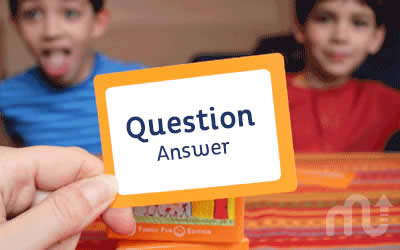
Each game has its own benefits, but MentalUP offers them all!
From improving verbal intelligence to developing focusing skills to enhancing learning abilities, MentalUP provides more than 150 entertaining and educational games to support your children’s mental, cognitive, motor and social skills.
Chosen by millions of families, MentalUP has easy-to-use features that are not only goal-oriented but also fun to play!
9- Puzzle:
One of the most popular games to train your brain are puzzles, and they go very well with a cup of coffee or milk. All kinds of puzzles, such as number puzzles or crossword puzzles, help develop analytical thinking, strategic planning, and focusing skills. It can be enjoyed by both children and parents.
How to Assess the Difficulty?
It is mainly based on trying to fit separate pieces together to get a complete picture. There are puzzles that consist of 20, 30, 40, 50, 100 and more pieces. You can easily find the right puzzle for your child's age and potential just like any other brain booster game.

Puzzles for Different Age Groups
| Puzzle Sizes | Age Group |
|---|---|
| 24 piece puzzles | 3-4 |
| 54 piece puzzles | 4-5 |
| 80 piece puzzles | 5-6 |
| 105-120 piece puzzles | 6-7 |
| 220-260 piece puzzles | 7-8 |
| 260-500 piece puzzles | 8-9 |
| 500+ piece puzzles | 10+ |
After the age of 10, most children should be able to solve any puzzle. Even so, patience and guidance should always be provided. The more a child solves puzzles, the more they will develop the motor skills that are required to put the pieces together.
10- BOOM Game:
Remember, intelligence is a multi-faceted concept. While playing brain stimulating games, you should think of each game as a different mental development tool. BOOM game is one of the games that require nothing but a normal attention span and concentration, so you can play it wherever, whenever. It’s also a fun activity for family picnics.
How to Play The BOOM Game?
You can play with 2-3-4-5 or even more people. It has the easiest rules among the brain boost games. Firstly, the players form a circle together and count from right to left like 1, 2, 3, 4. When it comes to 5 and its multiples, the player says “BOOM!” instead of 5 and its multiples and then points at any other player.
The game continues as the next player starts to count after 5 or its multiples like 6, 7, 8, 9, “BOOM!” The important point here is that each player saying “BOOM!” should point to someone else, so the player who says the multiples of five will continue to be changed.
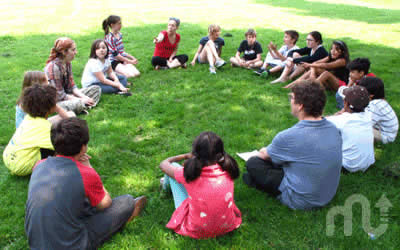
It is extremely important to help your children boost their brainpower and now it is easier than ever. Preferred by 10+ million families, MentalUP provides brain training games that enhance children’s memory, attention, focus, and other mental skills along with analytical thinking, visual intelligence and so much more…
Time is valuable. With only 20-minute daily brain workouts by using MentalUP’s suitable content such as brain teasers, riddles, Math Kangaroo problems, fitness exercises, and much more, you’ll see a whole lot of difference.
You can subscribe to MentalUP concentration games to support both the mental development and the technological needs of your children.


